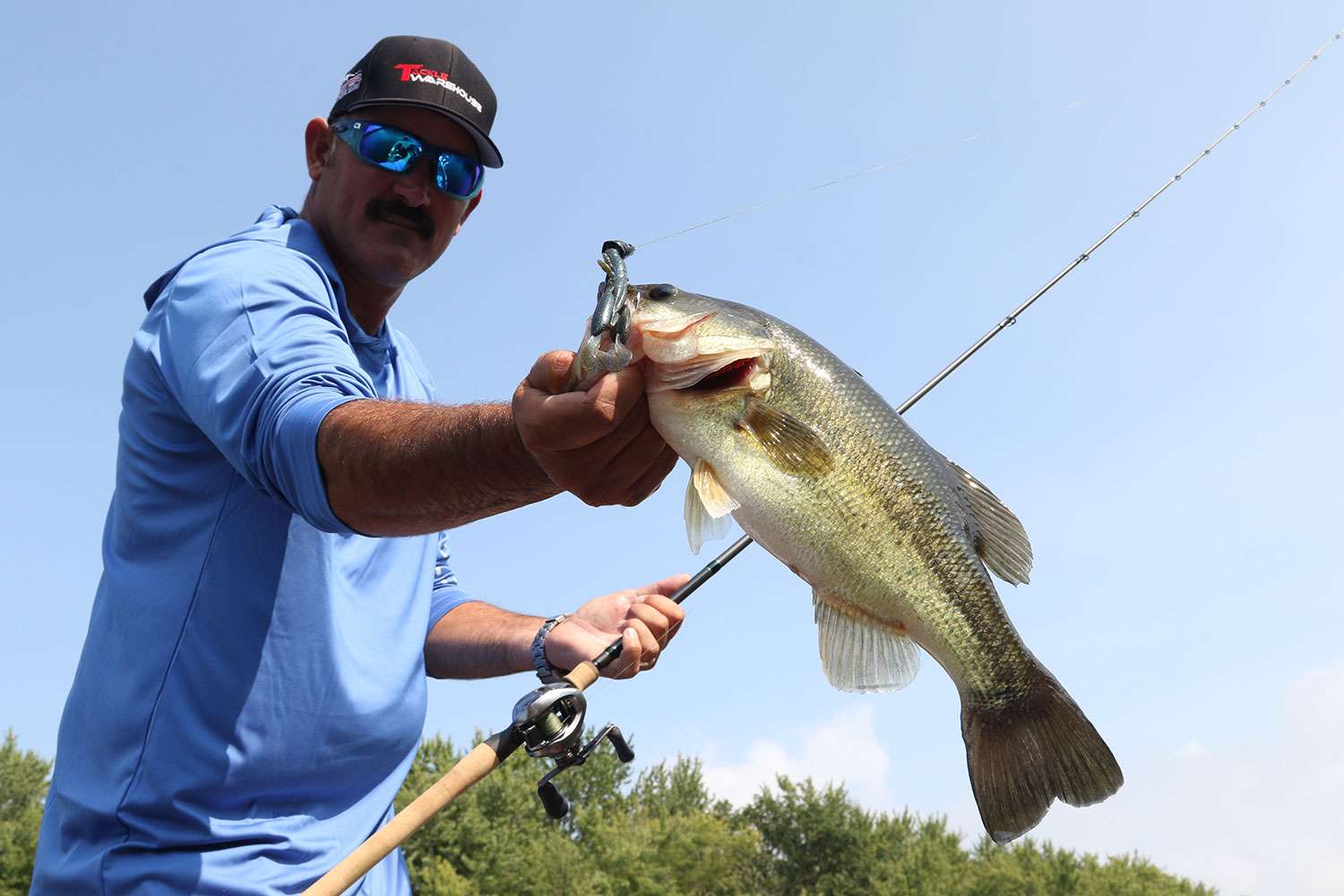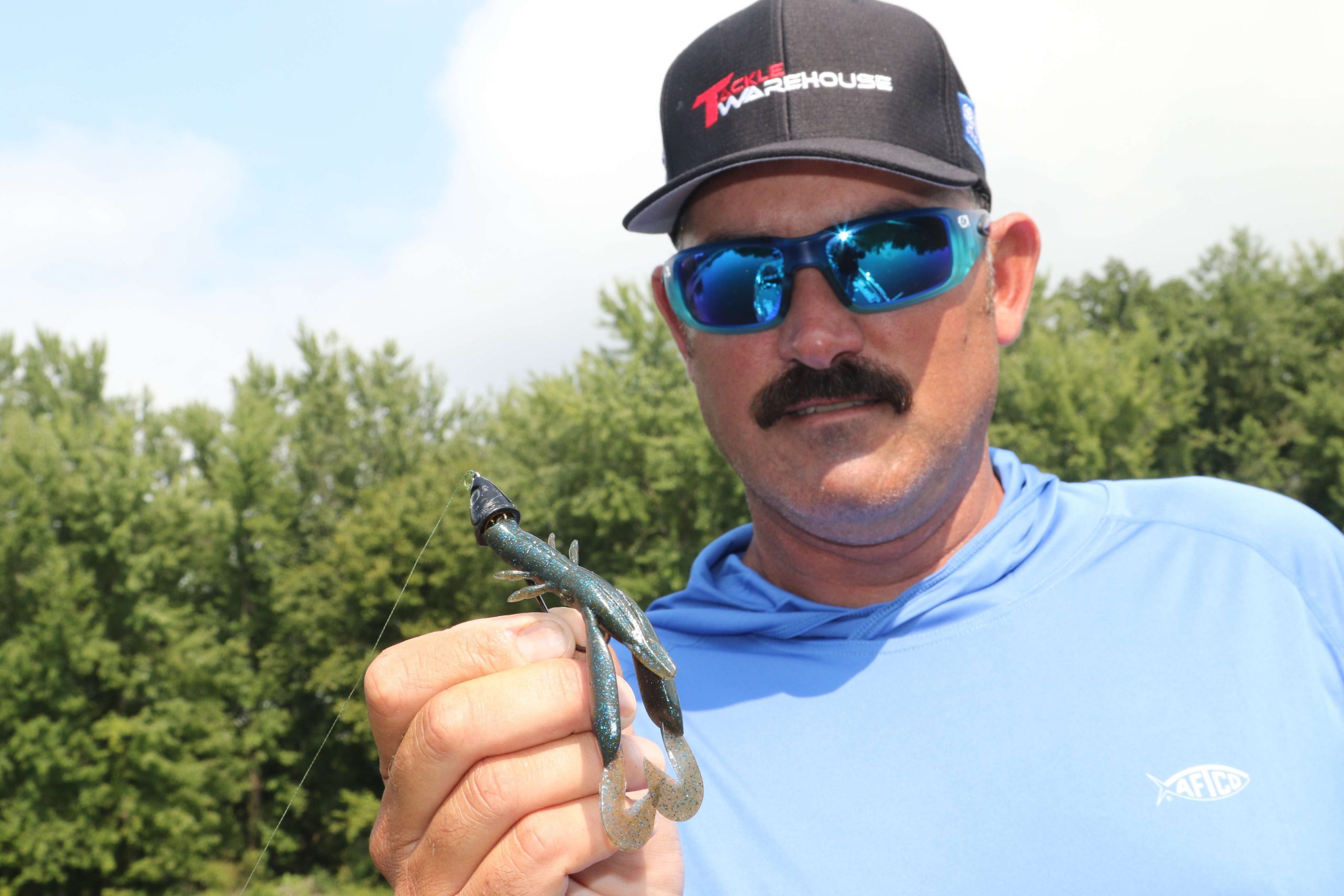
The thing about swim jigs is that they’re a good fit for a variety of scenarios. Jared Lintner’s clear on this, and the Elite pro won’t hesitate to use this presentation for everything from shallow laydowns to deeper outside grass lines.
What he will not do is use the same hook and bait combination across the board.
Hold on, you say? Switching trailers is common, but why does he change hooks on a swim jig?
That’s where Lintner’s rigging creativity shines. See, the California pro bypasses the popular fixed lead head/hook package in favor of a customizable rig based on the Freedom Tackle’s Stealth Hybrid Jig.
Comprising a conical head complete with 3D eyes, the Stealth features a forward line tie and a wide gap hook attached to an interchangeable coil tucked inside the head’s sonic brass echo chamber.
The benefits
Ready to fish out of the package, this basic package gives Lintner all the flexibility he needs to vary his bait’s every feature — starting with hook choice.
“A traditional swim jig has an exposed hook, but the way that I rig this is 100-percent weedless,” Lintner said. “If you’re pitching a standard swim jig into standing timber or bombing it back into tule pockets, that open hook will snag.”
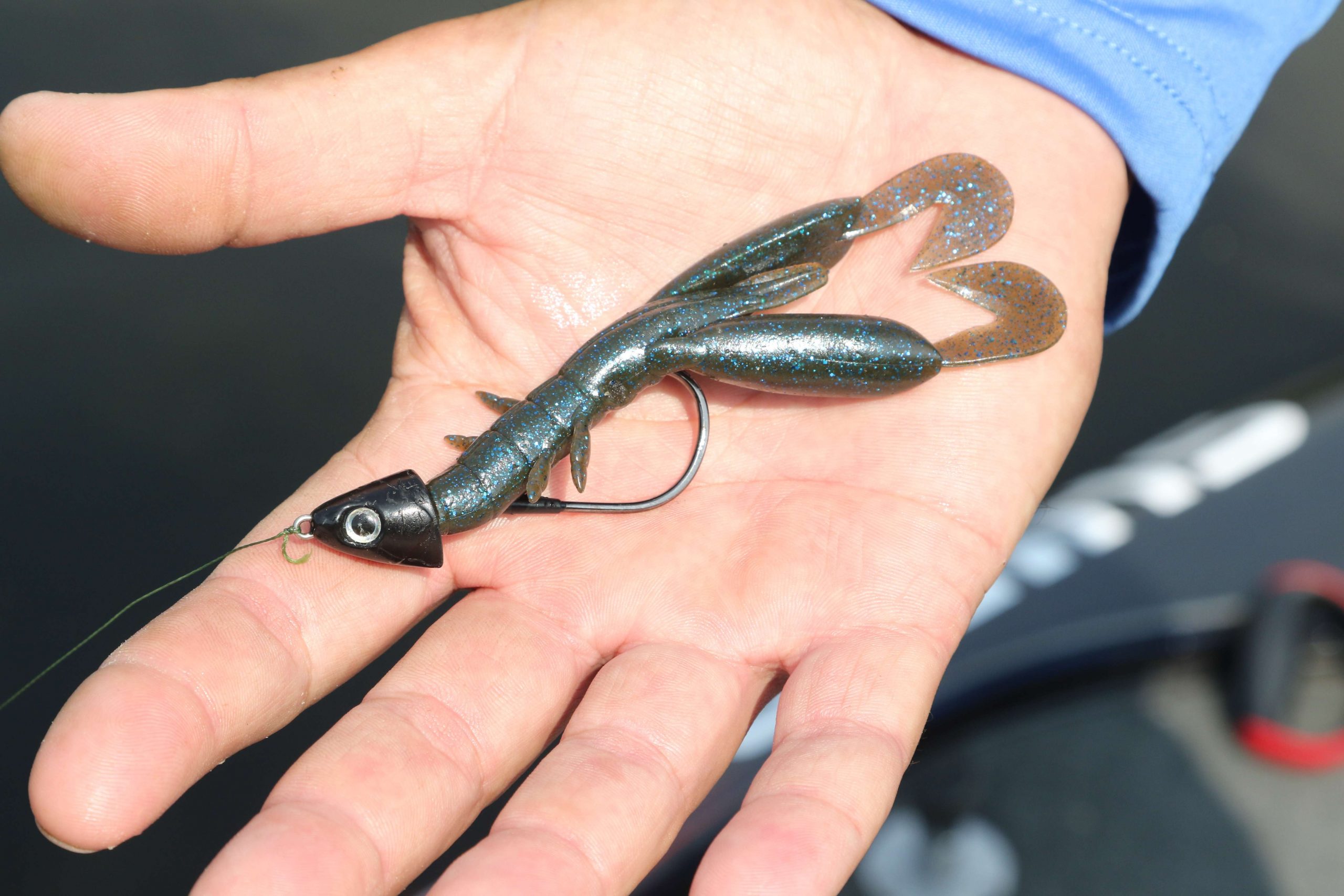
Also advantageous:
Firm hold: The Stealth’s mobile head reduces the fish’s thrashing leverage and limits the likelihood of a thrown hook.
Good posture: The standard swim jig’s weed guard protects the exposed hook, but if those fibers bump the tules, wood or other stiff cover, the bait tends to roll and send that hook point into a snag.
Creative control
Noting the Stealth’s blank canvas, Lintner lauds this boundless opportunity: “The biggest thing is that I can customize my bait according to the situation. If I want some more bulk, I can put a skirt on my swim jig, but more importantly, I can add whatever trailer I want.”
Indeed, creature baits, swimbaits, craws, worms; Lintner faces no bait limitation because he faces no hook limitation.
“Whether it’s a 2 1/2-inch bait or a 9 1/2-inch bait, I can switch out the hook to match whatever I feel is necessary,” he said. “So, having the ability to customize on the fly with a simple turn of (the hand) to remove one hook and add another is a huge advantage.
“I can’t tell you how many times I’ve been in the boat and I realized a different size bait would have worked better. Usually, you’d have to tie on a whole different bait to get the right size hook. With this rig, you simply pull out a different hook and you’re good to go.”
For example, Lintner likes the 3 1/2-inch Jackall Chunk Craw on a 3/0 Trokar straight-shank flipping hook for utilitarian swim jig duty around shallow vegetation, wood, etc. If he feels the scenario merits a bigger bait, he’ll switch to a 5.8-inch Jackall Rhythm Wave swimbait with 7/0 Trokar EWG hook.
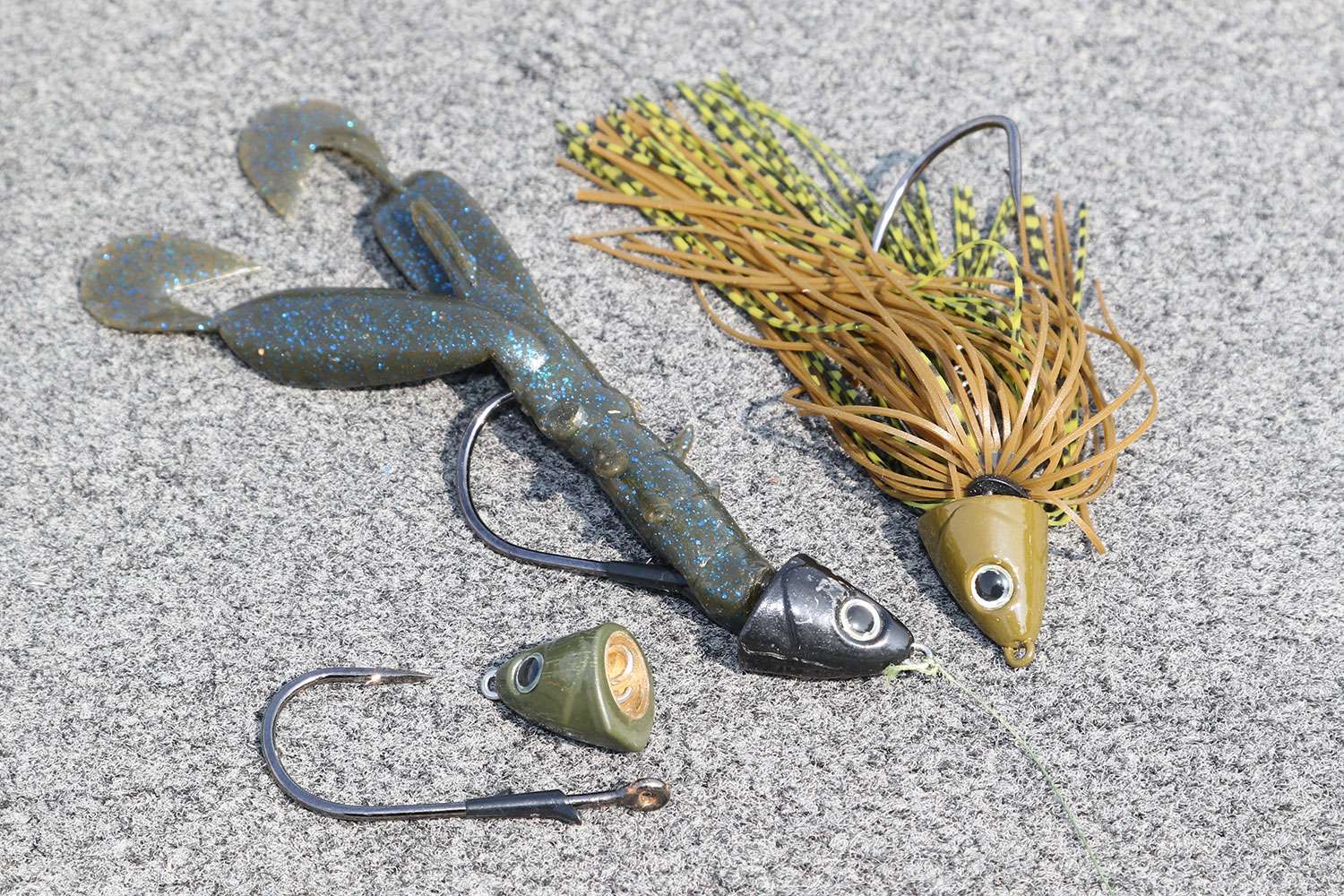
“The thing about practicing for an Elite event is that the lakes are so big, you’re sometimes fishing in clear water with emergent grass and then you run 10 miles down the lake and there’s submergent grass and the water’s dirtier,” Lintner said. “I like having two or three different setups with different colors, different weights and different baits for those situations.
“In practice, I’ll have three or four different sizes of hooks laying on my carpet. When I think of (another option), I simply untwist the hook out of the locking mechanism and add a new one. It takes you 10-12 seconds to rig a new bait.”
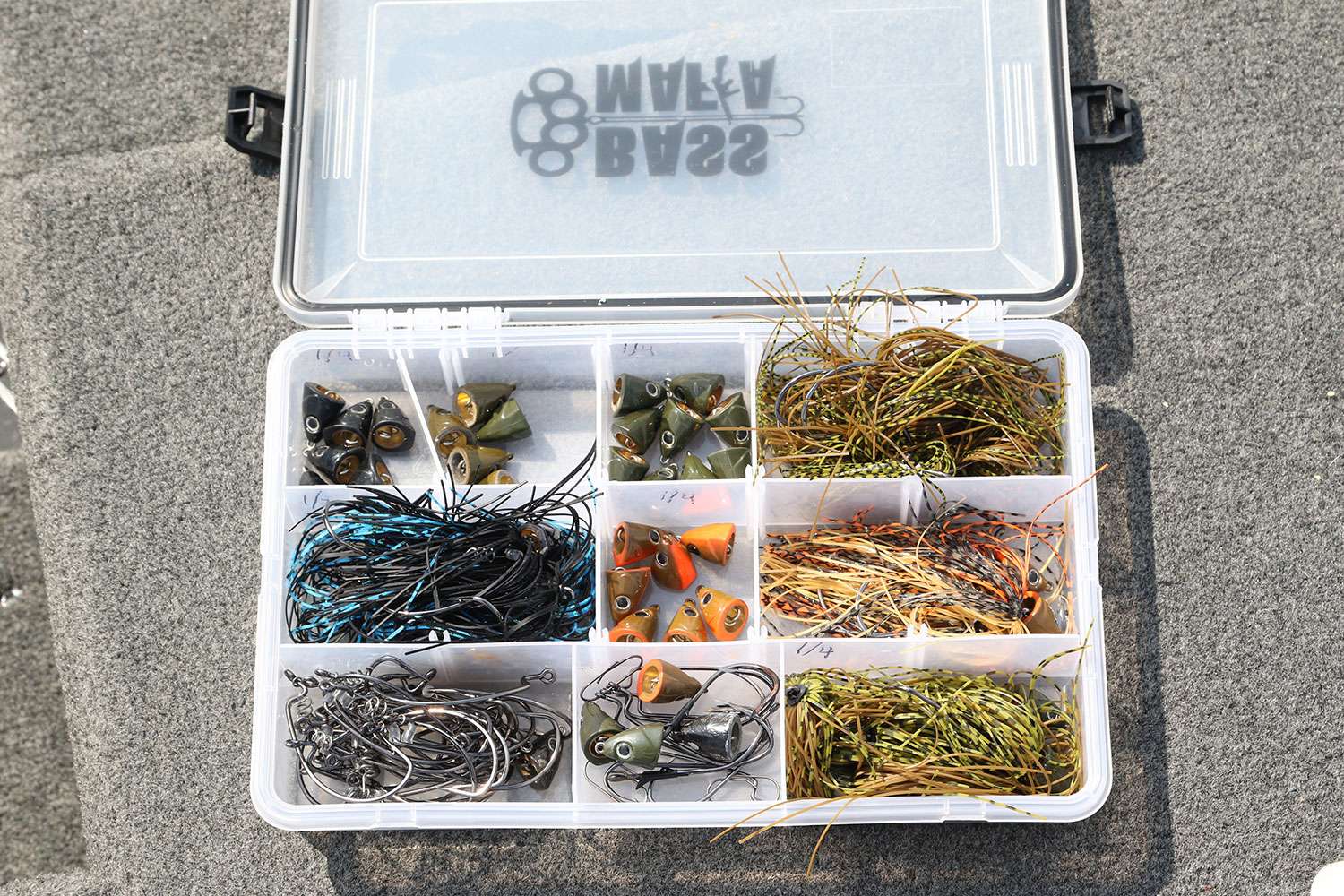
Match the hatch
Available in 1/8-, 1/4-, 1/2-, 3/4- and 1-ounce sizes, the Stealth covers the realistic range of swim jig depths. This, plus the design’s versatility. renders a common self-imposed limitation indefensible.
“If you just had one swim jig ready on your deck, as humans, we kinda get lazy,” Lintner said. “You might say ‘I’d rather be throwing a green pumpkin swim jig, but I have a white one tied on. We’ll see if they bite it.’ Well, you might just miss the whole deal.
“I like having a shad color, some type of green pumpkin or browns and oranges — something natural — and then I’ll have a black and blue or a black and purple bait, depending on time of year, water clarity, etc. When it’s in your rod locker tied up, it’s a lot easier to get out than if you had to go through the whole thing where you had to get out baits and tie on a new rig.”
This includes the skirt/no-skirt decision. The Stealth comes rigged with a silicone skirt and Lintner typically uses one when the fish are on a major feed.
“Early in the year — February, March — when the prespawn fish are eating big baits and fattening up for the spawn, they want that bulk,” he said. “The water is typically off-colored that time of year, so a skirt gives you more bulk for a bigger profile. The same thing applies in the fall, when the fish go back to eating big forage.”
The skirt may also prove helpful after a rain event when otherwise clear water turns dingy. Conversely, higher visibility and smaller forage typically prompt Lintner to lose the skirt.
Fishing his customized swim jigs on a 7-foot, 5-inch 4-power rod, Lintner spools with 16- to 18-pound Sunline Shooter fluorocarbon for clear water and sparse cover, while 50-pound Sunline FX2 braid gets the call for all other scenarios.
“I find that the more the fisheries get pounded, the more you have to make adaptations to get bit,” he said.
Bottom line: Rather than forcing an inferior selection on a promising scenario, Lintner’s system allows him to dial in precisely what he deems the right tool for the job.
